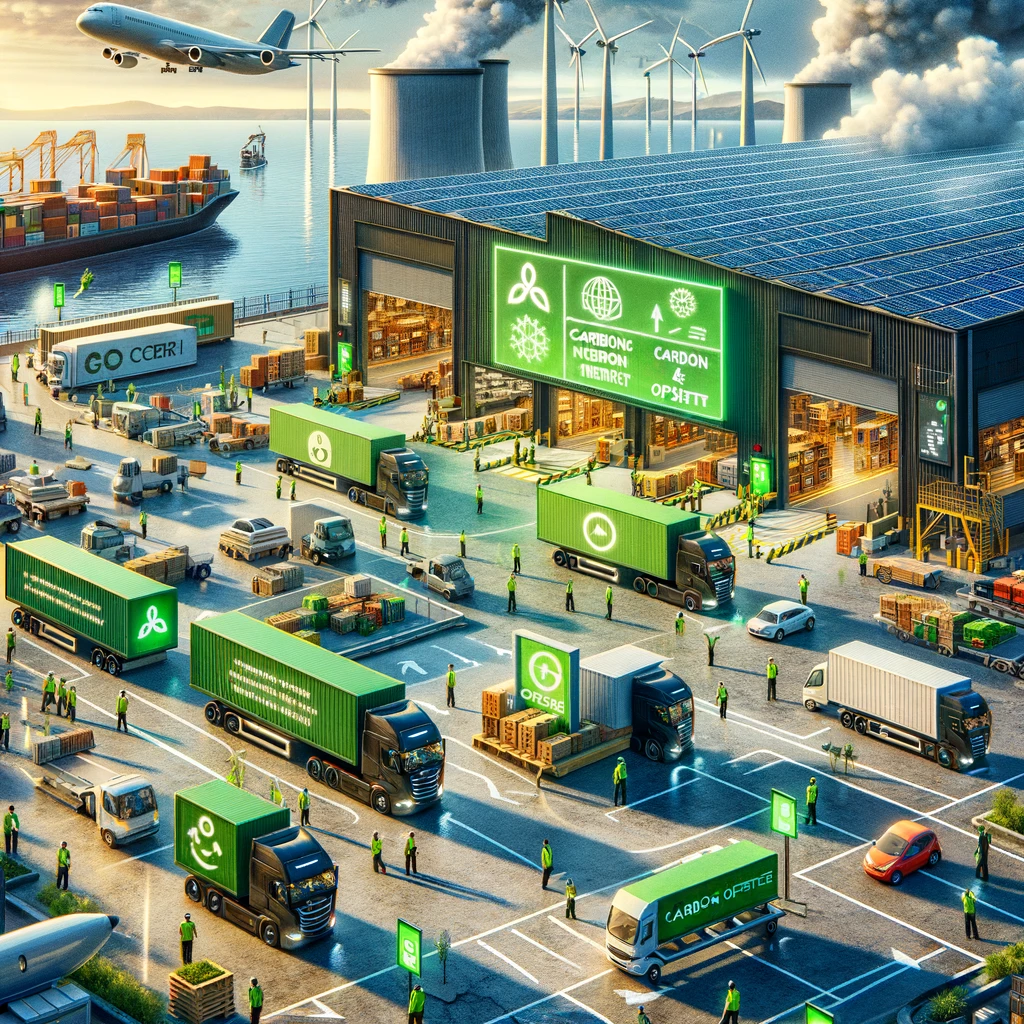What Is Carbon Credit Accounting?
Carbon credit accounting has become an important tool in the global fight against climate change. As concerns about environmental sustainability and the impact of human activities on the planet evolve, businesses and individuals are increasingly turning to carbon credits. Both individuals and businesses use these credits to measure and reduce their carbon footprint. It’s a small but impactful step towards a more sustainable future.
Carbon credit accounting is a systematic and evident process. It involves measuring, reporting, and verifying the greenhouse gas (GHG) emissions reduction or removal activities. That is conducted by individuals, businesses, or projects. Carbon credit accounting aims to quantify the environmental impact of these activities in terms of carbon credits. It provides a standardized framework for the trade and management of these credits within the global carbon market. With that said, this article aims to explore the details of carbon credit accounting. We will explore what carbon credits are, how they work, their global accounting practices, and why businesses should consider investing in this eco-friendly initiative. Read on to know more!

Overview – Carbon Credit Accounting
Carbon credit accounting starts with identifying and measuring the greenhouse gas emissions associated with a specific activity or project. This process involves assessing the baseline emissions that would occur in the absence of the project. Accurate measurement methodologies, often guided by international standards such as the Clean Development Mechanism (CDM) or the Verified Carbon Standard (VCS), are significant in this phase.
Once a project is implemented, continuous monitoring of emissions reductions is essential. Project individuals responsible for emission reduction initiatives must regularly collect and report data on the actual emissions avoided, reduced, or removed. This data forms the basis for calculating the number of carbon credits earned. The reported emissions reductions are subjected to an independent verification process by certified third-party auditors. In addition, verification is another key step in maintaining the integrity and credibility of the carbon credit market. With successful verification, carbon credits are issued based on the actual emissions reductions achieved. Each credit works to a specific amount of reduced or removed greenhouse gases.
The credits are then registered in a central registry. Hence, it provides a transparent and traceable record of the emission reduction. Moreover, carbon credit accounting relies on centralized registries to track the ownership and retirement of carbon credits. It ensures the market’s integrity by preventing the double-counting of credits and maintaining a clear chain of ownership. Companies can also buy and sell carbon credits on various markets, both voluntary and compliance-driven. Companies looking to offset their emissions purchase these credits, while those with excess credits can sell them. The transactions contribute to a market-driven approach. Thus, it provides financial incentives for emission reduction activities.
Therefore, carbon credit accounting is a thorough and well-defined process that enables the calculation and change of emissions reductions in the global carbon market. It plays a pivotal role in promoting and verifying sustainable practices while contributing to the significant goal of mitigating climate change.

What are Carbon Credits and How Does it Works?
Carbon credits represent a unit of measurement used to determine the amount of greenhouse gases a business has either reduced or offset. The carbon credit, also known as a carbon offset, allows the owner to emit a certain amount of greenhouse gases or carbon dioxide. The carbon credit is half of a cap-and-trade program, which allows for the emission of one ton of carbon dioxide or equivalent greenhouse gases.
Carbon credits operate on the principle of emissions trading. When a business engages in an activity that reduces or removes carbon emissions, it earns carbon credits equivalent to the reduced emissions. Companies can buy or sell these credits on the carbon market. Businesses or individuals looking to offset their emissions can purchase these credits to pay for their carbon footprint. Here’s a detailed breakdown of how carbon credits work.
1. Baseline Establishment
Before starting a project, a baseline is set to determine the expected level of greenhouse gas emissions under a business as usual plan. This baseline is a reference point against which the actual emissions reductions will be measured.
2. Project Implementation
Businesses, governments, or individuals implement projects or initiatives to reduce, avoid, or remove greenhouse gas emissions. These projects can encompass a wide range of activities. It can be adopting renewable energy sources, energy efficiency measures, reforestation, or methane capture.
3. Emission Reduction Measurement
The actual emissions reduction conducted by the project is carefully measured and verified using established standards and methodologies. This verification process ensures that the claimed reductions are accurate, transparent, and stick to internationally recognized standards. That includes the Clean Development Mechanism (CDM) or the Verified Carbon Standard (VCS).
4. Carbon Credit Issuance
Once the emissions reduction is verified, carbon credits are issued to the business responsible for the project. Each credit represents a specific amount of greenhouse gas emissions that have been reduced. These credits are then registered in a central registry. Thus, it provides a transparent record of emission reductions.
5. Trading and Transactions
Carbon credits can be traded on various markets. It creates a financial incentive for emission reduction activities. Businesses with excess credits can sell them to those in need of additional credits to offset their emissions. This trading can be done through both compliance and voluntary markets. In a compliance market, businesses may be required to offset a certain percentage of their emissions to comply with regulations. Businesses and individuals voluntarily offset their emissions and compliance markets in a voluntary market.
6. Retirement or Cancellation
When a business purchases carbon credits, they retire or cancel those credits to signify that the emissions associated with them have been offset. This process ensures that multiple businesses cannot use the same credits to claim the same emissions reduction.
7. Environmental Impact
The topmost goal of carbon credits is to drive real and measurable emissions reductions. So, with a financial value for carbon reduction initiatives, carbon credits encourage implementing sustainable practices, developing renewable energy projects, and protecting carbon sinks, such as forests.
8. Market Dynamics
The carbon credit market works on the principles of supply and demand. The price of carbon credits can fluctuate based on factors. It can be market demand, the type of project generating the credits, and the effectiveness of emission reduction initiatives.
Hence, carbon credits provide a tangible way for businesses to take responsibility for their carbon footprint. It helps foster sustainability and contributes to global efforts to combat climate change. Through a market-driven approach, greenhouse gas emissions can be reduced by promoting innovation, investing in clean technologies, and adopting practices that reduce them.

Carbon Credit Accounting Globally
International standards govern the accounting of carbon credits to ensure transparency and consistency. As mentioned, the Clean Development Mechanism (CDM) and the Verified Carbon Standard (VCS) are the two most widely recognized carbon credit standards. These standards provide guidelines for measuring, monitoring, and verifying carbon reduction projects. It ensures that credits are adequate and represent real emission reductions. Carbon credit systems facilitate global collaboration in the fight against climate change. International businesses can collaborate on projects to reduce emissions through carbon credit systems. It can be investing in renewable energy or improving energy efficiency. The credits generated from these projects represent real, measurable reductions in emissions, which can then be used to offset emissions from other sources. This collaboration helps prevent climate change and promotes global partnerships in achieving a sustainable future.

Why Should Businesses Invest in Carbon Credit Accounting
Investing in carbon credit accounting indicates a commitment to environmental responsibility. Businesses that actively work to reduce their carbon footprint contribute to global efforts to fight against climate change. It promotes a positive corporate image and attracts environmentally conscious customers and investors. Many regions have implemented carbon emissions regulations, and businesses that exceed their allotted emission limits may face penalties. In that regard, companies can stay in line with regulatory requirements and avoid potential fines by investing in carbon credit accounting. Implementing carbon reduction initiatives can lead to cost savings in the long run.
Moreover, energy efficiency measures, renewable energy projects, and other emission reduction activities earn carbon credits and often reduce operational costs. Furthermore, purchasing carbon offsets is common for individuals and businesses aiming to balance their carbon footprint. Many individuals and businesses today are conscious of their environmental impact and are taking steps to reduce their carbon footprint. Individuals and businesses can invest in environmental projects that help offset their carbon emissions by purchasing carbon offsets. It allows them to balance their carbon footprint and contribute to a more sustainable future.
How to Buy Carbon Credits
It is important to identify reputable sellers, understand the carbon footprint, and select projects aligned with the sustainability objectives before purchasing carbon credits. One significant step is to assess the business’s carbon footprint by evaluating emissions from various activities. It includes energy consumption, transportation, and waste generation. Several online calculators can also help with this task.
Moreover, it is fundamental to identify the type of projects the business wants to support (e.g., renewable energy, reforestation) and estimate the quantity of carbon credits needed to offset your emissions. It will depend on the calculated carbon footprint. Reach out to the selected carbon credit providers to inquire about their offerings, pricing, and the specific projects they support.
Once the business has identified a suitable provider and confirmed the details, purchase carbon credits. It can typically be done through direct transactions with the provider, online platforms, or through brokers. Some providers offer subscription-based or long-term commitments for carbon credit purchases. So, evaluate whether such arrangements align with the sustainability goals and organizational needs.

Purchasing Carbon Offsets
Purchasing carbon offsets is a straightforward process that involves selecting credible offset projects. It determines the number of offsets needed to neutralize your carbon footprint. Identify the type of carbon offset projects you want to support. Common projects include renewable energy (wind, solar), reforestation, methane capture, and energy efficiency initiatives. Different projects have varying environmental benefits. Ensure that the offset projects have undergone rigorous third-party verification and adhere to established standards. Review project documentation, including methodologies and monitoring reports, to verify their legitimacy. Carefully review the terms and conditions of the offset purchase. Understand the pricing structure, project duration, and any commitments or additional requirements associated with the purchase.
Carbon Credits vs Carbon Offsets
While “carbon credits” and “carbon offsets” are often used together, they have distinct meanings. Carbon credits are the units earned through emission reduction or removal activities, while carbon offsets refer to the purchase of these credits to balance the carbon footprint. Carbon credits serve as measurable units, representing the verified reductions, avoidances, or reductions of greenhouse gas emissions achieved through specific projects or initiatives. These credits are issued based on strict monitoring, reporting, and independent verification processes. It enables them to be traded on the global carbon market.
On the other hand, carbon offsets refer to the proactive act of paying for the carbon footprint by investing in these carbon credits. Individuals or businesses acquire carbon offsets through the purchase of credits generated by certified emission reduction projects. It includes those in renewable energy, reforestation, or methane capture. While originating from the same projects as carbon credits, the offsets signify a tangible commitment to balancing carbon emissions. It makes them a practical tool for individuals or companies looking to balance their environmental impact.
Both carbon credits and carbon offsets contribute significantly to promoting sustainable practices and collectively advancing the global goal of controlling climate change.

Final Words
To conclude, carbon credit accounting plays a significant role in the global effort to fight against climate change. As part of reducing greenhouse gas emissions, carbon credits create a market where companies can buy and sell emission permits. In that regard, companies receive a fixed number of carbon credits, which decrease over time. They can sell any excess credits to other companies. However, businesses that cannot easily reduce their greenhouse gas emissions can continue to operate, but it will come at a higher financial cost. Carbon credit proponents argue that it encourages quantifiable and verifiable reductions in emissions. Carbon credits have also resulted in the development of carbon accounting practices to help companies, governments, and individuals measure their carbon footprint.
